
Logistics and Technical service in Industry 4.0 concept
Publikované: 6. mája 2020
Miroslav Fusko – Monika Bučková – Vladimír Vavrík – Milan Martinkovič
The University of Žilina, Faculty of Mechanical Engineering, Department of Industrial engineering, Žilina, Slovakia
miroslav.fusko@fstroj.uniza.sk - monika.buckova@fstroj.uniza.sk
vladimir.vavrik@fstroj.uniza.sk - milan.martinkovic@fstroj.uniza.sk
ABSTRACTLike previous industrial revolutions, new technological developments are driving Industry 4.0 forward. The most relevant of these new technologies for today's factories are cyber-physical systems (CPS) and the industrial internet of things (IIoT). Fear of aion, digitisation and other manufacturing workforce challenges make it easy to overlook the potential positive cultural impact from these disrupting technologies. For today's factories, these new technologies are an opportunity to access the core objectives of competitiveness manufacturing. That is the reason why it is necessary to prepare a transformation model. The described transformation model is one of the most rapid ways to transform the classical (conventional) factory to modern Factory of the Future. This approach has the real potential for increasing the factory’s competitiveness.
INTRODUCTION
Both strategy and overall maintenance policy, have an impact on the performance of machines and devices (for example production machines, logistics devices). The productivity of production process, capital and investment returns and consequently the entire profit of factories all have a bearing on it. Maintenance policy in technical service must be conducted based on customer requirements in the area of quality, the operational capability of machines and processes and operational reliability of machinery, which all have an impact on added value and costs. Maintenance activities become gradually perceived more and more as a key to the economic success of manufacturing companies. That is a direct influence of concepts of manufacturing factory management, demanding new high standards of management. Industrial production of the new era (that means Industry 4.0, Factories of the Future, Smart factories) will be highly flexible in production volume and customization, extensive integration between customers, factories, suppliers and cooperation between universities. [1]
For the improvement of processes, maintenance, logistical systems or whole production, in modern industrial practice, managers are continually proposing new innovative solutions. To be able to implement new technologies arising from the Industry 4.0 principles, factories must be able to combine the use of both, the latest and the available technologies. While using them of the current development trends – disrupting trends and technologies. While using them, businesses must be aware of the current development trends – disrupting trends and technologies. The problem, which appeared after the arrival of Industry 4.0, is the solution of maintenance and logistics their transformation into Smart processes in the context of a proactive approach. [2]
Over the last five years, maintenance and technical service have begun to form a sophisticated system. The main objective of the factories is to get these processes into a digital form through digitisation. Managing digitisation in the auxiliary and service processes will be crucial in the future not only for the survival of the factories but also to ensure that intelligent products are maintained in state-of-the-art condition. It makes no sense to create intelligent products and Things of the Future if the manufacturing systems and processes in factories follow conventional principles. Logistics planning is one of the key activities driving productivity growth and increased flexibility of manufacturing factories.
BACKGROUND
The ensuring of continuity and the quality of the production leads organisations to think about the status quo of their maintenance, equipment. At present, many factories are still run the "maintenance" way. Technology companies like Amazon or Google have taught us that we can have things right at the moment we need them. Contracts between the manufacturers and their suppliers include a cost reduction clause by several per cents year-on-year. Quality is not seen as a competitive advantage today but as a matter of fact. Over the past few years, mass production of some products has changed from tens of thousands of batches to a single item production, and this is gradually affecting all manufacturers. Today's factory management is mostly intuitive. The management lacks data, information, methods and tools of transparent decision making. We usually manage the manufacturing processes the "maintenance" way, which means that we only address the shortcomings identified. However, we need to switch over to predictions and prescriptions. [3] The problem is that production planning and management have basics on the principles that have been in use over a hundred years now. In the course of the past twenty years, the Lean Management and Six Sigma principles have been successfully applied - the factories have indeed made headway. Today, however, this is no longer sufficient. The combination of those principles with digitisation introduces an entirely new quality to the picture. Thus, the factories must, whether they like it or not, set out on a transformative journey to become smart factories. Moreover, businesses must realise that this path of transformation is not final and will change with the advent of other new technologies.
PROACTIVE APPROACH AND SOLUTIONS
Logistic perspective
Industrial aion can and will generate explosive growth with technology related to new inflexion points: nanotechnology and nanoscale assembly systems; MEMS and nanotech sensors (tiny, low-power, low-cost sensors) which can measure everything and anything; and the pervasive Internet, machine to machine (M2M) networking. Real-time systems will give way to complex adaptive systems and multi-processing. The future belongs to Intelligent factories with innovative technologies like digitisation, nanotech, wireless everything, complex adaptive systems and of course, unique systems for testing logistic processes by using simulation and emulation. Major new software applications will be in wireless sensors and distributed peer-to-peer networks – tiny operating systems in wireless sensor nodes, and the software that allows nodes to communicate with each other as a larger complex adaptive system. That could be the wave of the future. On the logisticians, the requirements are put in all domains and all over the world increase every day. If factories fail to provide their products at the right time, in the right quantity and at the right price in these times of growing online business, they can no longer satisfy their customers’ Complex requirements. The industry is facing increasing pressure for optimization. Many companies have not yet recognized that Industry 4.0, the Internet of Things and Big Data are more than just marketing buzzwords. Intelligent solutions are the basis for the logistics of the future. Some new handling solutions for intelligent factories: [4 - 7]
1) Automated Guided Vehicles (AGVs) | Technical service
An AGV (Fig. 1) is a robot or driverless forklift truck designed, built and configured to increase efficiency and reduce costs by helping to ae the movement of goods in a manufacturing facility or warehouse. There are many different sizes and types of aic guided vehicles, depending on the application and use. The setting and programming of the aed guided vehicle can lead them to follow markers or wires on the floor of a warehouse, manufacturing factory. Another way is to set them that way that they can work through the use of vision or lasers. They are used to perform a repetitive sequence of operations; however, their role can be changed at any time to perform any type of towing or carrying tasks. Particularly it is useful when the role changes or the reconfiguration of manufacturing factories or warehouse takes place.
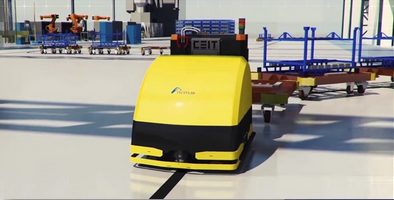
2) Automated Storage and Retrieval Systems
An Automated Storage and Retrieval System refers to a variety of computer-controlled methods for aically depositing and retrieving loads to and from defined storage locations within manufacturing (Fig. 2), warehousing and distribution environments. They are compact machines that utilize the unused high-level space of a plant or warehouse for the storage of products. Items can be placed in specific locations either on pallets, trays or hanging from bars and can be accessed very easily. They are used to aically to retrieve and put away products and can operate within a very narrow high space.
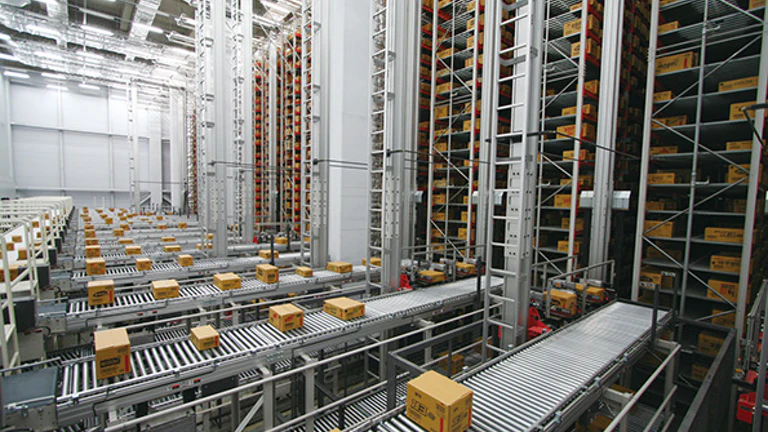
3) Sortation Conveyor Systems & Sortation Technology | Technical service
A conveyor is a mechanized piece of handling equipment that moves materials from one location to another (Fig. 3). There are many types of conveyor, depending on the application and environment. Within a warehousing environment, a Pallet Conveyor or a Mezzanine Floor Conveyor can be used to transport goods from one location to another. Within a postal environment, a Belt Conveyor or Roller Conveyor can be used to move parcels and letters. Specialist Garment conveyors are used within the apparel industry, and other types of conveyor include Gravity Roller Conveyors, Lineshaft Roller Conveyors, Modular Plastic Chain Conveyor and Stainless-Steel Conveyor. A conveyor system can be used in overhead applications or mounted on the floor. They can be fixed to a specific location or mounted on wheels.
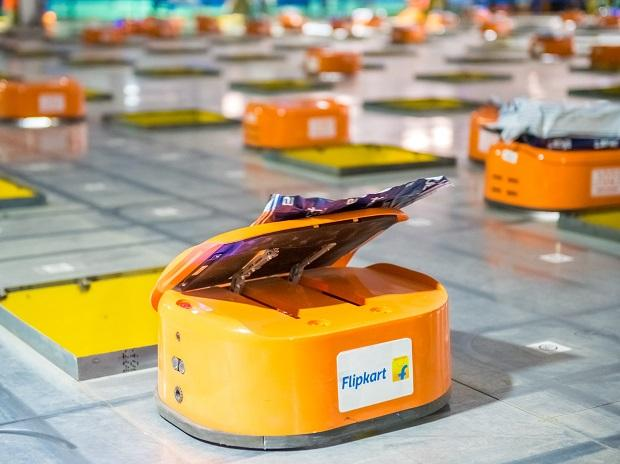
4) Virtual and Augmented reality (VR, AR)
Another key application for AR tech is providing immersive, comprehensive training with zero risks (Fig. 4). Nowadays have some factories virtual simulators for their workers, for example, managers, production planners, process leaders, maintenance workers, workers in logistics and quality specialists on the principles of lean production. VR is a completely computer-generated, immersive and three-dimensional environment that is displayed either on a computer screen (Fig. 4) or through unique stereoscopic displays, such as the Oculus Rift. In contrast, AR (or Mixed Reality as it is also sometimes called) combines both the virtual and the real. Users of AR are still able to sense the real world around them; this is not possible when people are immersed in VR.
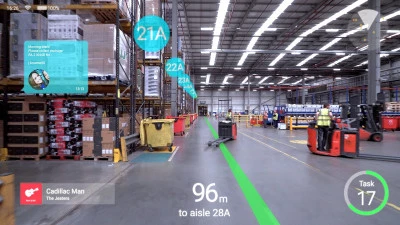
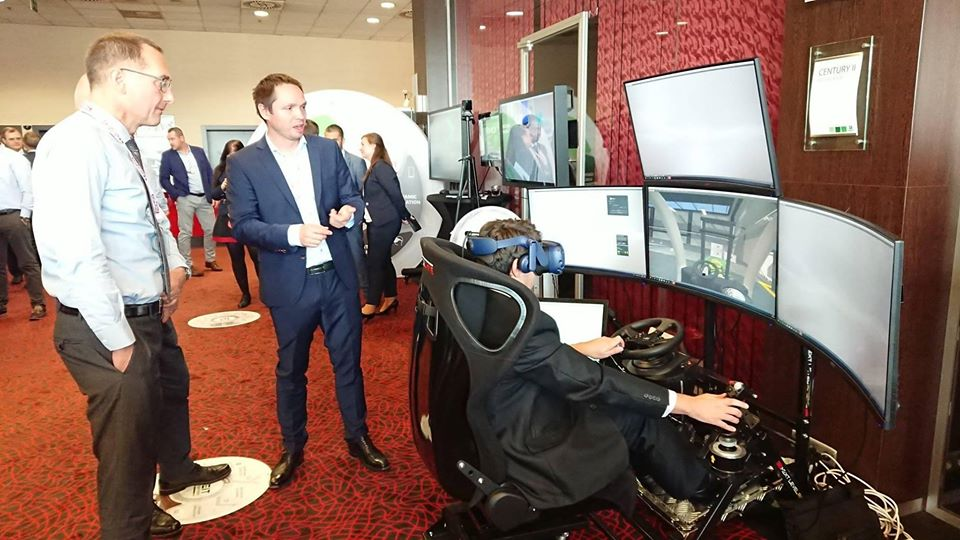
Maintenance perspective
In the meantime, the dominant opinion inside of companies is: "As this is a digital transformation, it is the agenda of the IT department". Therefore, we shall entrust the head of IT (CIO) with running it. " This, however, is not a correct opinion. All employees of the company, from top management to operators, must be involved in such a transformation process. The factory should start in the following areas: [8 - 11]
- digital transformation is the top management’s agenda. It is the top management who must be the initiator and the lead coordinator,
- the implementers should be a team of "positive optimists" who strive for change and are reliable,
- the basic premise for change should be a set of opportunities and threats coming from the market. It is necessary to find out what a digital competitive advantage could be,
- very important and often neglected is fostering the corporate culture. The corporate culture needs to be guided towards the changes brought about by digital transformation,
- the crucial part is an implementation plan, coordinating the application of changes to the company's life and the impact on jobs, education, production and company results.
The digital transformation path of the factory is not a finite state; it is an endless journey of building a business. Before the factory embarks on the journey of transformation and digitization, the following questions should be answered:
- Why transform?
- What to transform?
- How to transform?
Model for the transformation of classical factoriesBased on previous knowledge and answers to the questions above, it is possible to develop a digitization model for transforming a classic factory into a Smart one. The following Figure 5 shows a transformation model of a conventional factory into a Smart one. The result will be the following solution. A technician in charge of car repairs uses a vehicle management system. He often needs to pay a visit to the central system to find the necessary parts and for troubleshooting purposes. It would be easier for him to be connected to such a system. The same may apply to for example documentation, manuals, exchange instructions. Such workers would certainly benefit from scanning, for example, a QR code and get the information directly to their cell phone or tablet, instead of reading user manuals. Such digital system will allow for taking pictures or making videos from installing or replacing a device, and for uploading this photo and video as part of a repair report. On behalf of what we said in this article, we could recommend the creation of proposal of a single system, or links, that would facilitate communication between different software packages.
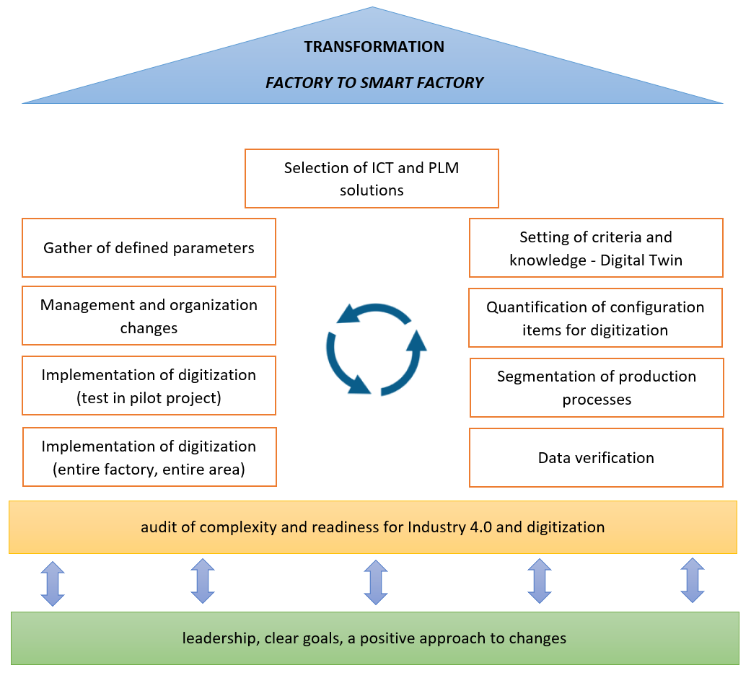
Selected companies in the automotive industry through social profiles communicate with their customers, the public and they trying to improve their name and the name of their products in the public eye. Digitization, in this form, will open the door to a great many new opportunities. This situation, however, does not mean that the factories should stop using old solutions. The so-called basic products are and will be still producing. However, in the digital future, it will be possible to combine these physical products will software solutions that will make them even easier to use, create value, and improve product ingenuity, giving customers additional benefits.
The proposed model is suitable for Top Down implementation. The scope of implementation depends primarily on the size of the factory and its financial standing. Small, medium and large factories vary in terms of their development level.
First benefits from a pilot implementation
The evolution of the definition of the industry into the Smart factories has provided a big improvement in terms of production efficiency and promoted new ways to implement interfaces between humans and machines. The ability of a manufacturing enterprise to exploit the possibilities of digitization is nowadays essential to its success. If the factories want the vision of digitization and autonomy of their processes and products to materialize and to maintain their competitiveness, they need to digitize their business processes and create the conditions for building a digital ecosystem. In the digital competitiveness rankings, present-day Slovakia ranks among those in the European Union occupying the last places, and this must be changed. Therefore, digitization needs to be addressed in enterprises first to ensure their high performance, reliability, keeping the deadlines and cost management. Such businesses will have foundations in place for developing new trends in all areas of society, for example, the field of automotive and transport, engineering, health, education, and many others. Part of our research involves discussions with partners from other universities or businesses about realistic and feasible digitization strategies, and we try to introduce a lot of potential technologies, for example factory digitization, implementation of exponential technologies, Smart Things, autonomous things. Summarisation of the first benefits of implementing such solutions in factories can be in the following points:
- reduction of failure rate by 15 to 38%,
- elimination of human errors,
- increase in Overall Equipment Effectiveness by 12%,
- reduced maintenance costs by 30%,
- increased customer focus,
- increasing the ability of the system to respond to unplanned situations by 20%,
- improved Mean Time Between Failure by 74.5%,
- operation is much safe,
- increased equipment and machine readiness by 1.6%,
- change in the ratio of planned maintenance to maintenance after failure (from 30% - 70% to 70% - 30%).
CONCLUSION
This article shows the view on upcoming changes, that is necessary to do in the area of processes in factories. Some changes in auxiliary and service processes (maintenance and logistics) have already begun. In “Industry 4.0”, the movement of goods is no longer centrally coordinated; instead, production is, in a sense self-organised – in some cases even beyond the boundaries of individual factories. To make this movement possible, not only calls for complex logistics concepts that can respond flexibly to short-term production changes but also require fully networked trucks that aically adapt their route planning. With the advent of Industry 4.0 and digitisation, factories have to take a big leap. Everything that can be aed will be aed.
ACKNOWLEDGEMENTS
This work was supported by the Slovak Research and Development Agency under the contract No. APVV-16-0488.
REFERENCES
[1] HORVÁTHOVÁ, B. – DULINA, Ľ. – KRAJČOVIČ, M. – KASAJOVÁ, M.: The impact of Industry 4.0 on work activities. In: Aktuálne otázky bezpečnosti práce : 31. medzinárodná konferencia BOZP. - Košice: Technická univerzita v Košiciach. - ISBN 978-80-553-2784-6. - s. [1-6] [USB-key].
[2] BARBUŠOVÁ, M. – MEDVECKÁ, I. – GAŠO, M.: Use of TCO analysis in Industry 4.0. In: Průmyslové inženýrství 2019 [print] : sborník příspěvků. - 1. vyd. - Plzeň: Západočeská univerzita v Plzni, 2019. - ISBN 978-80-261-0894-8. - s. 10-17. [3] BARTODZIEJ, CH. J.: The concept Industry 4.0. In: The Concept Industry 4.0. BestMasters. Springer Gabler, Wiesbaden. DOI https://doi.org/10.1007/978-3-658-16502-4_3. Online ISBN 978-3-658-16502-4. [4] SVITEK, R. – KRAJČOVIČ, M. – FURMANN, R. – SKOKAN, R.: Návrh a hodnotenie logistického systému. In: Fórum manažéra [print] : teória a prax v riadení podniku. – ISSN 1339-9403 (online). – Roč. 15, č. 1 (2019), s. 103-110. [5] WOROBEL, R. – BUBENÍK, P. – KOVÁČOVÁ, L.: Improving business processes in printing company by using simulation tools. In: Invention for enterprise: proceedings. – 1. vyd. – Wydawnictwo Akademii Techniczno-Humnistycznej wBielsku-Białej, Willowa 2, 43-309 Bielsko-Biała, 2019. – ISBN 978-83-66249-18-9. – s. 136-139. [6] ŠELIGOVÁ, M. – SLAMKOVÁ, E. – ČECHOVÁ, I.: Design of logistic systems. In: Invention for enterprise: proceedings. – 1. vyd. – Wydawnictwo Akademii Techniczno-Humnistycznej wBielsku-Białej, Willowa 2, 43-309 Bielsko-Biała, 2019. – ISBN 978-83-66249-18-9. – s. 120-123. [7] RAKYTA, M.: Development of logistics strategy in industrial company. In: Vedecká konferencia UNIZA [print] : zborník príspevkov. - 1. vyd. - Žilina: Žilinská univerzita v Žiline, 2020. - ISBN 978-80-554-1635-9. - s. 523-526 [print]. [8] C. YEN, Y. LIU, C. LIN, C. KAO, W. WANG AND Y. HSU.: Advanced manufacturing solution to industry 4.0 trend through sensing network and Cloud Computing technologies. 2014 IEEE International Conference on Automation Science and Engineering (CASE), Taipei, 2014, pp. 1150-1152. [9] KOVÁČOVÁ, L. – BUBENÍK, P. – ČAPEK, J.: Knowledge use in company performance evaluation system. In: InvEnt 2019: Industrial engineering – Invention for enterprise [electronic] : proceedings of the scientific international conference : 18. 6. 2019, Žilina. - 1. vyd. - Bielsko-Biała: Wydawnictwo Akademii techniczno-humanistycznej, 2019. - ISBN 978-83-66249-18-9. - s. 76-79. [10] GREGOR, M. – HOČ, M. – MEDVECKÁ, I. – BIŇASOVÁ, V.: Factory of the future as the product of engineering work in the globaliation process. In: Globalization and its socio-economic consequences [electronic] : proceedings. - ISSN 2454-0943. - 1. vyd. - Žilina: Žilinská univerzita v Žiline, 2018. - ISBN 978-80-8154-249-7. - s. 2045-2052. [11] SCHRÖDER, CH.: The Challenges of Industry 4.0 for Small and Medium-sized Enterprises. Available on the Internet: <https://library.fes.de/pdf-files/wiso/12683.pdf>.

